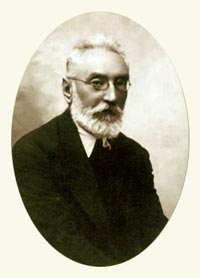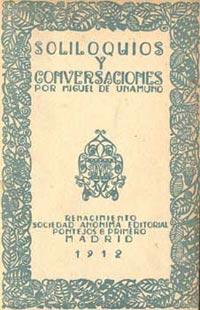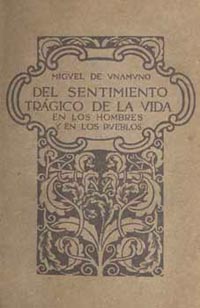



Miguel de Unamuno y Jugo
Bilbao 1864 - Salamanca 1936
After studying Literature and Philosophy in Madrid (1880-1884), he received a doctorate at the age of twenty. In 1891 he won the Chair in Greek at Salamanca, and was rector of the university from 1901 (except for several brief interruptions) until his death.
Unamuno was at once a poet, man of letters, philologist, philosopher, positivist, humanist, existentialist, pragmatist, spiritualist, irrationalist, mystic, Catholic, Christian, Protestant, Lutheran, Calvinist, atheist, socialist, liberal...there have been many definitions, but his thought and works cannot be completely understood without considering the four fundamental stages of his life:
Main works: Obras Completas, IX voll., Madrid 1966; Escritos socialistas, Madrid 1976; República española y España repúblicana 1931-1936, Salamanca 1979; El resentimiento trágico de la vida, Madrid 1991; Artículos en la Nación de Buenos Aires, Salamanca 1994; Nuevo mundo, Madrid 1994; De patriotismo espiritual, Salamanca 1997; Unamuno y el socialismo. Artículos recuperados (1886-1928), Granada 1997; Escritos inéditos sobre Euskadi, Bilbao 1998.
Bibliography: «Cuadernos de la Cátedra M. de Unamuno», ed. Univ. de Salamanca; P. Cerezo Galán, Las máscaras de lo trágico, Madrid 1996; C.L. Ferraro, Benedetto Croce e Miguel de Unamuno. Comparazione di due “sistemi” di pensiero, Citta di Castello (PG) 2004; Ib., Luigi Pirandello e Miguel de Unamuno: fra “identità” e “creazione del personaggio”, «Rivista di Filosofia Neo-Scolastica», XCIX, Aprile-Giugno 2007; Ib., La novela de la tierra de G. Verga y ‘Paz en la guerra’ de M. de Unamuno, «Revista de Literatura», LXX, julio-diciembre 2008, CSIC, Madrid; M. García Blanco, En torno a Unamuno, Madrid, Taurus 1965; V. González Martín, La cultura italiana en M. de Unamuno, Salamanca, Ediciones Universidad de Salamanca 1978; J. Marías, M. de Unamuno, Madrid, Espasa-Calpe 1980; C. Morón Arroyo, Hacia el sistema de Unamuno. Estudios sobre su pensamiento y obra literaria, Palencia, Ediciones Calamo 2003; N. Orringer, Unamuno y los protestantes liberales, Madrid 1985; E. Salcedo, Vida de don Miguel, Salamanca, Anaya 1964; M. Zambrano, Unamuno, Barcelona, Debate 2003; R. Senabre, Miguel de Unamuno y Jugo, in Diccionario biográfico español, Real Academia de la Historia.